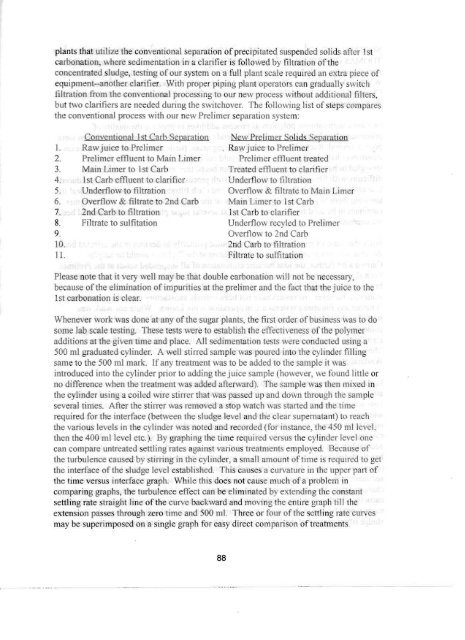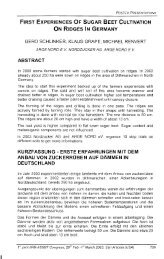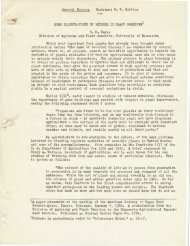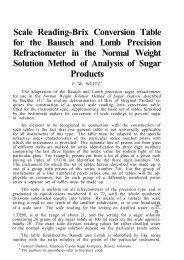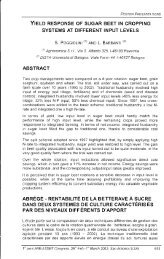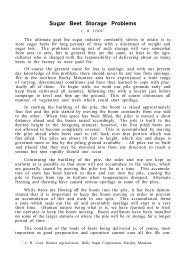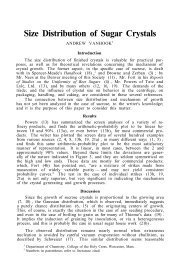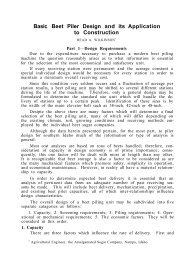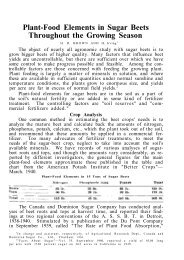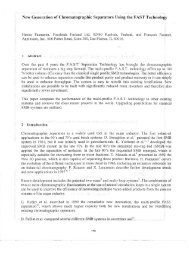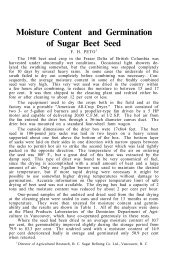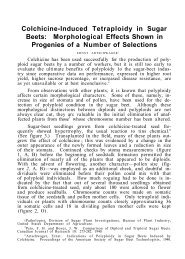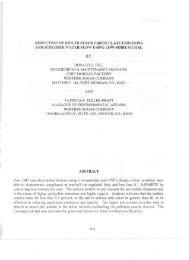Prelimer suspended solids can be separated. - ASSBT Proceedings
Prelimer suspended solids can be separated. - ASSBT Proceedings
Prelimer suspended solids can be separated. - ASSBT Proceedings
Create successful ePaper yourself
Turn your PDF publications into a flip-book with our unique Google optimized e-Paper software.
plants that utilize the conventional separation of precipitated <strong>suspended</strong> <strong>solids</strong> after 1 st<br />
carbonation, where sedimentation in a clarifier is fo llowed by fi ltration of the<br />
concentrated sludge, testing of OUI system on a full plant scale required an extra piece of<br />
equipment--another clarifier. With proper piping plant operators <strong>can</strong> gradually switch<br />
filtration from the conventional processing to our new process wi thout additional filters,<br />
but two clarifiers are needed during the switchover. The fonowing list of steps compares<br />
the conventional process with our new <strong>Prelimer</strong> separation system:<br />
Conventional ] st Carb Separation<br />
l. Raw juice to Pre]jmer<br />
2. <strong>Prelimer</strong> effluent to Main Limer<br />
"J. MainLimer to 1st Carb<br />
4. 1st Carb effluent to clarifier<br />
5. Underflow to fi Itration<br />
6. Overflow & filtrate to 2nd Carb<br />
7. 2nd Carb to filtration<br />
8. Fihrate to sulfitation<br />
9.<br />
10.<br />
11 .<br />
N w <strong>Prelimer</strong> Solids Separation<br />
Raw juice to Pre]jmer<br />
Pre]jmer effluent treated<br />
Treated emuent to clarifier<br />
Underflow to filtratIOn<br />
Overflow & filtrate to Main Limer<br />
Main 1imer to 1 st Carb<br />
1 st Carb to clarifier<br />
Underflow recyled to <strong>Prelimer</strong><br />
Overflow to 2nd Carb<br />
2nd Carb to flitratlOn<br />
Filtrate to sulfitation<br />
Please note that it very well may <strong>be</strong> that double carbonation will not <strong>be</strong> necessary,<br />
<strong>be</strong>cause ofthe elimination ofimpurities at the preli mer and the fact that the juice to the<br />
1st carbonation is clear.<br />
Whenever work was done at any ofthe sugar plants, the first order ofbusiness was to do<br />
some lab scale testing. These tests were to establish the effectiveness of the polymer<br />
additions at the glven time and place. All sedimentation tests were conducted using a<br />
500 ml graduated cylinder. A well stirred sample was poured into the cylinder filling<br />
same to the 500 ml mark. Ifany treatment was to <strong>be</strong> added to the sample it was<br />
introduced into the cylinder prior to adding the juice sample (however, we found Ilttle or<br />
no difference when the treatment was added afterward) The sampJe was then m ixed in<br />
the cylinder using a coited wire stirrer that was passed up and down throllgh the sample<br />
several times. After the stirrer was removed a stop watch was started and the time<br />
requi red for the interface (<strong>be</strong>tween the sludge level and the clear supernatant) to reach<br />
the various levels in the cylinder was noted and recorded (for instance, the 450 ml level.<br />
then the 400 mllevel etc.). By graphing the time required versus the cylinder level one<br />
<strong>can</strong> compare untreated settling rates against various treatments employed. Because of<br />
the turbulence caused by stirring in the cylinder, a sma ll amount oftime is required to get<br />
the interface ofthe sludge level established. This causes a curvature in the upper part of<br />
the time versus interface graph. While this does not cause much of a problem in<br />
comparing graphs, the turbulence effect <strong>can</strong> <strong>be</strong> eliminated by extending the constant<br />
settling rate straight line of the curve back ~ard and moving the entire graph till the<br />
extension passes through zero time and 500 ml. Three or four of the settling rate curves<br />
may <strong>be</strong> superimposed on a single graph fo r easy direct comparison of treatments.<br />
88


